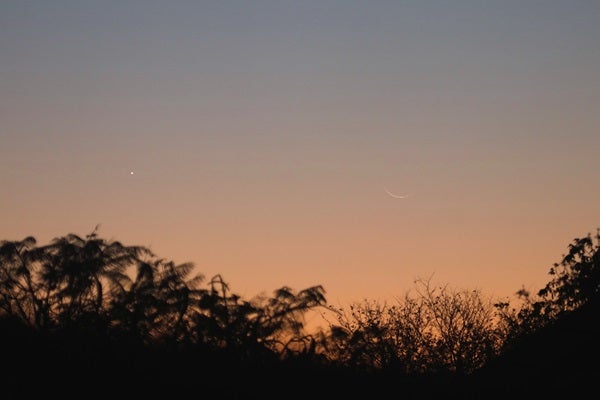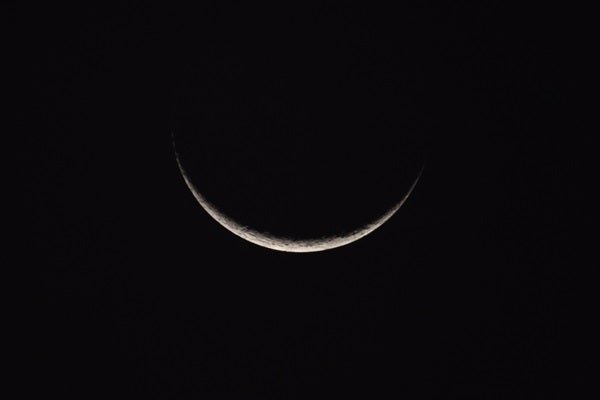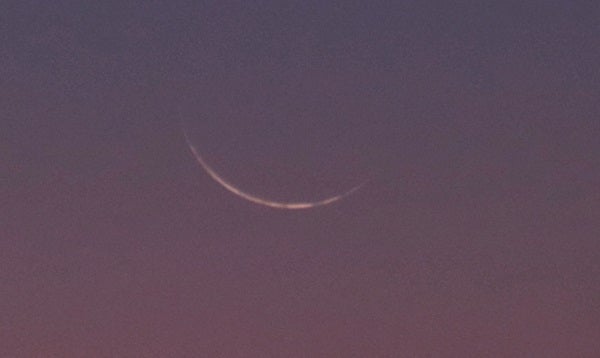The thin lunar crescent is a perfect example. How many times have I looked at the old Moon in the new Moon’s arms and missed (or ignored) an amazing, well-known phenomenon usually associated with transits of Venus? How appropriate that the young Moon wears a mischievous Cheshire-cat grin early in each of its lunations.
First, the lunar blackdrop is different from what’s become informally known as Saber’s beads, a phenomenon occurring when the Moon is less than one day from its New phase. Then, it shows staggered brightness peaks along the crescent, reminiscent of mini-Bailey’s beads.
Since Illinois amateur astronomer Stephen Saber first described “his” beads in 2006, others have linked his description to all manner of phenomena. The oldest are Galileo’s 1609 telescopic observations: The celebrated astronomer noted in The Sidereal Messenger that at “the ends of the upper and lower cusps also certain bright points, quite away from the rest of the bright part, began to rise out of the shadow.” Modern telescopic views show a broken arc (or necklace) of illuminated peaks all along the lunar limb that Saber also imaged when the Moon was extremely thin.
The lunar blackdrop effect is different. When the Moon is less than one day from New, an observer can see multiple blackdrop effects along the slender lunar crescent under imperfect seeing conditions. I first realized this on the night of September 29, 2019, when the 21-hour-young lunar crescent appeared only 4˚ above the western horizon.
Unlike Saber’s beads, these dark lunar “pajama stripes” were illusions caused primarily by diffraction — the bending and interfering of light waves — which was intensified by the blurring effects of Earth’s atmosphere. Undoubtedly, the Moon’s complex interplay of light and shadow along the thin crescent enhanced the phenomenon.
The Moon was only about one day from perigee (its closest point to Earth during any orbit), which helped make the phenomenon readily apparent to the unaided eyes. However, the truth came forth through 8×42 binoculars, which showed the blackdrop effect coming and going depending on the seeing, especially as the Moon sank ever closer to the horizon.
When crisp, the Moon was an unbroken smile; under heat turbulence rising from the surrounding desert sands, the Moon fractured into a toothy Cheshire-cat smile, with the dark gaps waxing and waning in the unstable air.
Have you also seen this effect? If so, send your impressions to sjomeara31@gmail.com.












